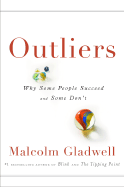The Dip – A little book that teaches you when to quit (and when to stick) by Seth Godin
Winner wins big because the marketplace loves a winner – Zipf’s Law. Why it matters? People don’t have a lot of time and they don’t want to take risks. Also, scarcity makes being at the top worth something. With a flatten and long-tailed world, perhaps, this theory may not hold well or perhaps there are more ways to be the best. Big companies fail in a new market, according to the author, because they’re too willing to compromise to avoid offending other divisions or to minimize their exposure. They fail because they don’t know when the quit and when to refuse to settle. In a free market, we reward the exceptional.
The big surprise – the wrongest thing you learned in school – being well rounded is the secret to success in life. Superstars can’t skip the questions they don’t know – they get good at questions they don’t know.
Architecture of Quitting: Strategic quitting is the secret of successful organizations. Almost everything in life worth doing is controlled by the Dip, which the long slog between starting and mastery and the combination of bureaucracy and busywork, the difference between the easy “beginner” technique and the most useful “expert,” the long stretch between beginner’s luck and real accomplishment, the set of artificial screens set up to keep people like you out. Successful people don’t just ride out the Dip; they lean into the Dip, push harder, changing the rules as they go.
Curve 2: the Cul-de-sac (dead end) It’s keeping you from doing something else. The opportunity cost of investing your life in something that’s not going to get better is just too high.
Curve 3: The cliff – like smoking.
If it’s worth doing, there is probably a dip. The dip creates scarcity; scarcity creates value. The Dip is the reason you’re here. You get what you deserve when you embrace the Dip and treat like the opportunity that it really is. It’s easier to be mediocre than it is to confront reality and quit. Quit in the Dip often enough and you’ll find yourself becoming a serial quitter. If you can’t make it through the Dip, don’t start.
Seven reasons you might fail to become the best in the world:
1. Run out of time.
2. Run out of money.
3. Get scared
4. Not being serious enough about it.
5. You lose interest or enthusiasm or settle for being mediocre.
6. Focus on the short term instead of the long .
7. Pick the wrong thing to be the best in the world.
Eight Dips:
1) Manufacturing dip, 2) Sales Dip, 3) Education Dip, 4) Risk Dip, 5) Relationship Dip, 6) Conceptual Dip, 7) Ego Dip, 8 ) Distribution Dip.
Quitting the stuff you don’t care about or the stuff you’re mediocre at or better yet quitting the Cul-de-Sacs frees up your resources to obsess about the Dips that matter. If you’re going to quit, quit before you start. Reject the system. Don’t play the game if you realize you can’t be the best in the world. You have only two good choices: Quit or be exceptional. Average is for losers.
The market wants to see you persist. If demands a signal from you that you’re serious, powerful, accepted, and safe. The bulk of the market, any market, is made up of those folks in the middle of the bell curve, the ones who want to buy something proven and valued. If your product isn’t working, if your service isn’t catching on, if you’re not even appealing to the crazy geeks who like the new stuff, you mustn’t persist with a tactic just because you feel stuck with it.
The opposite of quitting isn’t “waiting around” is “re-dedication” – an invigorated new strategy designed to break the problem apart.
It’s OK to quit, and quit often. Quit if you’re on a dead-end path, facing a cliff, has a Dip that isn’t worth the reward at the end. Not giving up and abandoning your long-term strategy but quitting the tactics that aren’t working. If your job is a Cul-de-Sac, you have to quit or accept the fact that your career is over. Strategic quitting is a conscious decision ou make based on the choices that are available to you. Quitting is better than coping because quitting frees you to excel at something else. Never quit something with great long-term potential just because you can’t deal with the stress of the moment.
Three questions to ask before quitting:
1. Am I panicking? Quitting when you’re panicked is dangerous and expensive.
2. Who am I trying to influence. Influencing one person is like scaling a wall. Influencing a market, on the other hand, is more of hill than a wall. You can make progress, one step at a time, and as you get higher, it actually gets easier.
3. What sort of measurable progress am I making?
Quitting before you start: Write down under what circumstances you’re willing to quit and when. And then stick with it.
Soft tires: pick your dip. It’s the last 10 pounds, the ones that get it to full that really pay off. Figure out how much pressure you’ve got available, then pick your tire. Not too big, not too small.
If it scares you, it might be a good thing to try.
This book presents some interesting ideas: 1) be the best, no reason to be mediocre, 2) a sound quitting strategy. At first, I was confused about author’s message whether it’s best to slog through the Dip or quitting. After reading it second time, I finally got the message. Yes, quitting is not so bad if it’s the means to an end. The hard part is to figure out if you’re in a Dip or a Cul-de-sac or cliff. Well, I think I can apply some of the learning here to my career.


